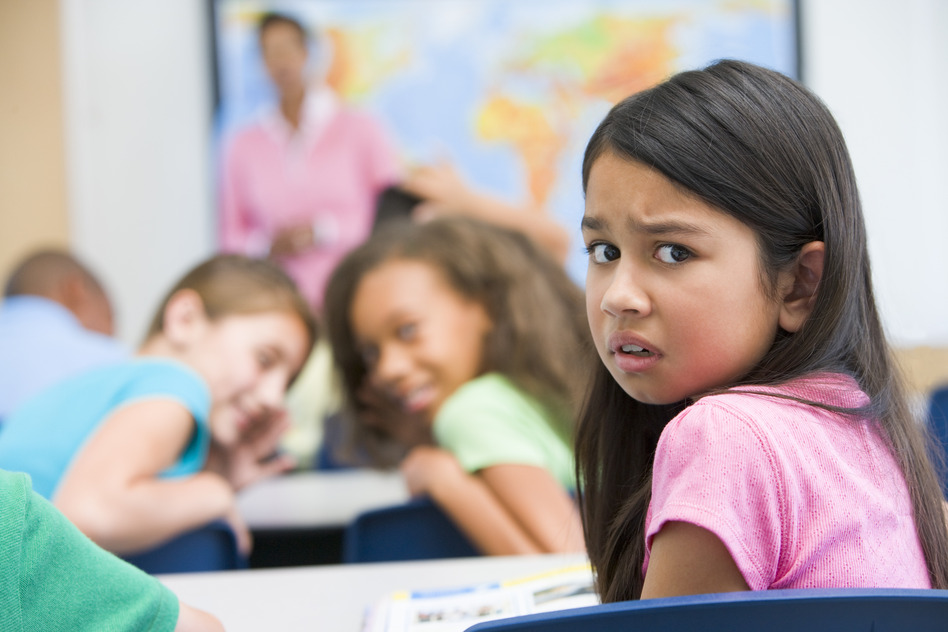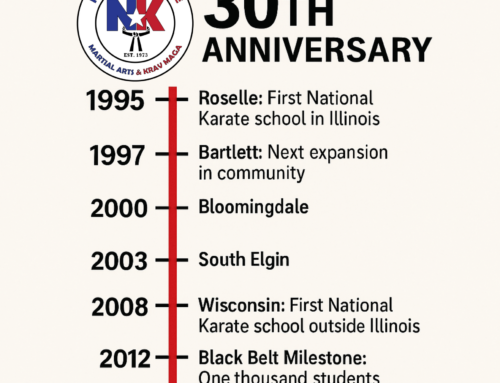October is Bully Awareness Month and the scourge of bullying is becoming pandemic in the U.S. The Urban Institute’s study on bullying showed that about 50 per cent of girls experienced psychological bullying, and 45 percent of males experience physical bullying. Bullying is linked to many negative outcomes on a child’s well-being, including negative impacts on mental health, substance abuse, anxiety, depression and suicide. (Education Statistics Institute)
The Old Days…
In the old days, our parents would tell us that dealing with a bully is a part of life and learning to deal with bullying teaches you how to have a “thick skin”. And they would say that the way to deal with a bully was to walk up to the bully and punch him in the nose. Problem solved. Lesson learned. Confidence gained!
While there are instances where punching a bully in the nose may still work, times have changed and life is more complex than it used to be. For instance if you are being bullied by the “popular group” at school it’s not really feasible to take on 15 bullies at one time. Or if you are an adult you can have legal consequences as well as civil suit liability. If you are being cyber bullied, you may never even see your bully face to face. The scary part for most is that they don’t even know where to begin to resolve a bully situation. This article is written to give you some help.
The New Generation of Bully
Question: What is a Bully and Why do People Bully?
Answer: A bully is any person who uses strength or power to harm or intimidate those who are weaker.
People become Bullies for many reasons. Sometimes they are people who have been bullied themselves (sometimes by parents). When I was a kid most psychologists told us that bullies were insecure people who were needing to feel better about themselves by dominating others. The old saying “hurting people will hurt people” is true of them. And that kind of bully still exists, however, sociologists tell us that with the “entitlement generation” upon us, there is a new kind of bully. The new generation of bullies are seemingly confident people who lack empathy. This new era bully is often popular and gains attention and gets laughs by taunting and ridiculing those with less social status. This bully is so selfish that they are completely unconcerned about the pain they cause in others. Whatever the reason for being a bully, none are OK.
Signs that your child is being bullied.
Answer:
- Health issues – this might include changes in eating habits, problems with sleeping, or having nightmares.
- Behavioral issues – your child might become withdrawn or alternatively they might become more aggressive or moody.
- Poor performance in school – a bullied child would be more likely to skip school or to have issues with their performance.
- Anti-social behaviors – Children who are bullied are more likely to argue with parents and teachers and more likely to use drugs and alcohol.
- Have lower self-esteem and may have thoughts about self-harm or suicide.
How to prevent becoming a victim.
Answer: Having a “good presence” is one way to prevent becoming a victim. Look people in the eye, speak with confidence rather than a questioning tone. Chin up, shoulders back. Studies show that people who demonstrate these important body language skills are less likely to be selected by a bully. These skills can be practiced at home.
Another tactic that often works is showing assertiveness to the bully. This especially works with the “old school bully” who is trying to look cool by dominating someone. When they see that you are not easily dominated they often look for another victim that won’t challenge them. Martial arts training does help young people develop this kind of confidence. Knowing they can handle a physical confrontation if the situation escalates gives a student confidence. Even if they don’t use their martial arts strikes in the confrontation this confidence is very empowering.
How to protect yourself from getting hurt.
Answer: Studies also show that people who have been trained to protect themselves are less likely to be bullied and/or attacked. National Karate often conducts free Bully Prevention Seminars and donates free Self-Defense Programs to students as a community service, so that young people can receive the kind of training that can protect them and help them feel more confident.
How to help other bully victims without becoming a victim yourself.
Answer: It is important to teach our kids that the Bystander has Responsibilities. Most bully situations are in front of other people who simply “gawk” at the spectacle, but many studies show that if bystanders intervene, instead of just watch, they can end the bully/victim cycle. For people with strong personalities it may mean they speak up and say “just leave her alone!”. For people who are shy, it may mean that they slip away and tell a responsible adult. But the worst thing that a bystander can do is to just “watch the show” because that gives the bully power and attention.
Cyber Bullying
16% of high school students (grades 9–12) were electronically bullied in the past year. Cyber bullying means that someone can intimidate, insult and belittle you without ever being face to face with you. Cyber Bullies now have a voice even if they are not physically dominating. People can also pass along or “share” the bullying without having met you. They will jump on another bully’s bandwagon.
Adult Cyber Bullies?
One reason bullying is so prevalent is that so many adults and parents display bully behavior online. Just look at almost any post on social media where there is a difference of opinion and see how fast the posts escalate into aggressive name calling and insults. We are experiencing a society of declining social etiquette where people feel they have a right to unload and spew verbal vomit. Thirty years ago people would have been embarrassed that they said those things in public but now there seems to be no shame in “losing it” in front of the world. It seems people are a lot more courageous behind a computer screen. In a way many adults have become cyber-bullies and kids see how “adults” respond online and they think that behavior is normal and accepted. They should be reminded that there can be legal consequences to their actions, especially if the victims harm themselves.
How to Stop Cyber Bullying.
Answer: If your child is being Cyber Bullied it is best not to respond back to the Bully but to report it to an adult immediately. Take a screen shot of the Bullying and report it to a trusted adult. Save all the messages of Bullying for proof. Try to block the person sending the messages. Make your passwords a secure as possible and never share them with anyone except your parents. Never “share” anything that is belittling to others or explicit. Most students do not understand that some forms of cyber bullying are considered a crime. Something you do today can follow you for the rest of your life and have legal consequences and even hurt your future employment. (Especially sexting or sending explicit photos.)
Find a Safe Place

Is there ever a time when I should remove my child from school?
Our grandparents would never think of pulling their child out of school because of bullying. And I wouldn’t recommend doing so because of one or two instances. But in the modern bully environment it can easily escalate from one or two incidents, and become a regular problem. It can soon be a steady barrage of demeaning incidents on a regular occasion which can lead to severe anxiety, depression and suicide. Bullying was the cause of 6,078 deaths in a year in the 15 to 24 age group and suicide is the second leading cause of death for 10 to 34 year olds. (Center for Disease Control) This is way beyond teaching a child to have “thick skin”.
Answer: Assuming you have tried all the usual channels of talking to teachers, coaches and school principles. And you’ve coached your child on the techniques of how to prevent becoming a victim and maybe even enrolled in self-defense classes. The question you have to ask yourself is this… “If I was being bullied at work by a boss or a co-worker to the point where it was affecting my mental health and I was filled with anxiety over the thought of going to work each day. If I was suffering from signs of depression. What would I do?” Most people would say it’s just not worth it, and they would find another job! So if we would change environments for our own sanity, why wouldn’t we let our kids leave an abusive environment in favor of a safe environment? This could mean switching school districts, or enrolling in a private school or even homeschooling.
I know two different families that have done this. They pulled their child out of school to protect their mental well-being. One family enrolled their child in a private Christian school. One family began homeschooling. Both kids showed a dramatic improvement in their mental health and self-esteem. Both families tell me it’s the best thing they ever did.
For more Help!





